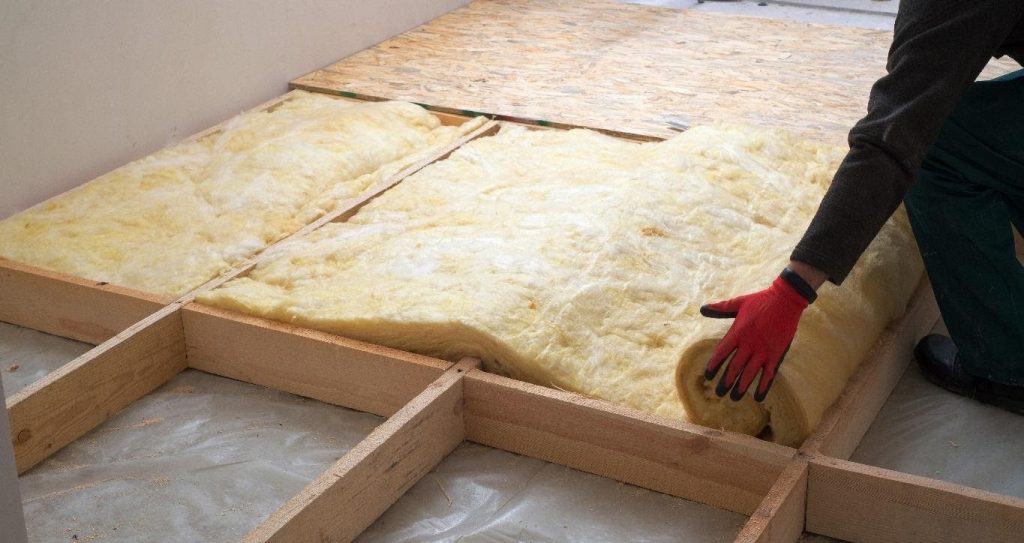
12 Jan Green Remodeling: Make Your Home Energy Efficient
When remodeling your home (or any building, for that matter), there are really two broad factors to consider: aesthetics and functionality.
100 years ago, green remodeling probably would have fallen into the former – people would’ve assumed you wanted a home with a lot of greenery, or just a lot of green paint. Nowadays, of course, green remodeling is about creating an eco-friendly space – one that greatly reduces your carbon footprint.
In this piece, we’re going to focus on two key ways you can go green while remodeling your home – insulation, and green technologies. Fortunately, you rarely (if ever) have to sacrifice aesthetics when pursuing green remodeling – function and form are both served.
The importance of insulation
When you’re looking to do a green remodel, insulation should be your top priority. There are some people who think of insulation as being mostly important to cold climates, but insulation helps keep your home cool when it’s hot outside, too. By properly insulating your home, you can greatly reduce (or eliminate) the need for heating in the winter, and substantially cut back on your AC use in the summer.
Understanding the building envelope
Insulation targets the building envelope. Basically, the building envelope is everything that keeps the outdoor climate separate from the indoor climate: walls, roofing, windows, doors, and the foundation.
By limiting heat transfer at these points, you can seriously reduce energy consumption – heating and cooling are the two biggest energy sinks for households.
Windows and doors
There are a few things to keep in mind when buying windows. In Hill Country, and most other places in Texas, our goal is to reduce solar heat gain through windows and doors. In colder climates, the opposite is true.
You can go about this in a number of different ways – it doesn’t mean you have to sacrifice those giant bay windows you’ve been eyeing. Double-glazed windows with a low solar heat gain coefficient are available in all shapes and sizes. The double glaze means you’ll see less heat loss in the winter, all while reducing how much the sun heats up your home.
Generally, you’ll want these windows to be north-south facing. This might reduce the amount of sunlight flooding through your windows at various times of day, but it also dramatically reduces how much solar heat your home will absorb.
When it comes to doors, fiberglass and vinyl are excellent bets. You should also opt for weather stripping to maximize insulation.
The Passive House Standard
We won’t go too deeply into the technical specifications of Passive House here – they’re a bit dry. What you need to know is simple: if your house is well-insulated enough, it all but eliminates the need for regular heating and cooling.
You can accomplish this by going over what standards set as the minimum amount of insulation. You should insulate every wall, your attic, and your foundation. Using modern insulators like spray foam insulation can help you accomplish this without too much bulk.
If you opt to insulate your house in this way, you’ll need a ventilation system to keep your air fresh – the cost of running a ventilation system is, however, much lower than the cost of running your air conditioner all summer.
Green technologies
There are a number of technologies that can help you reduce your carbon footprint. Some are helpful for automation and data tracking (smart technologies), while others are just more energy-efficient. The first ones we’re going to look at help you create your own renewable energy:
Producing your own energy
One of the most exciting ways to make your home green is the use of renewable energy. The most common way of going about this is through the use of solar panels, but some innovative companies have even created small-scale wind farms.
To get the most value out of renewable energy production, check with your utility to see if they have a net metering or energy purchasing scheme. Austin Energy, for example, offers Value of Solar credits.
Smart technologies
Smart technologies are basically any technologies connected to each other and/or to a central hub and the Internet. They’re a branch of home automation.
The most common green smart technologies are smart lighting and smart thermostats. Smart lights can turn themselves on and off automatically based on a variety of pre-programmed triggers – automatically dimming or shutting off lights can lead to a lot of energy savings over time.
Even more savings can be had with smart thermostats. The difference between smart and programmable thermostats is simple – you can adjust smart thermostats on the fly with your smartphone, and they help you track energy usage.
New appliances
From air conditioners to ovens, new appliances are becoming more and more energy-efficient. Energy Star is a great place to look if you want to find the most efficient appliances – they’re almost all as stylish as they are efficient, so they’ll jazz up your place all while lowering your utility bills.
With that, we’ve covered the basics of green home remodeling. Have any questions? Don’t hesitate to get in touch with the Hill Country remodeling professionals at CMW General Contractors – we’d love to make your green dreams come true.

